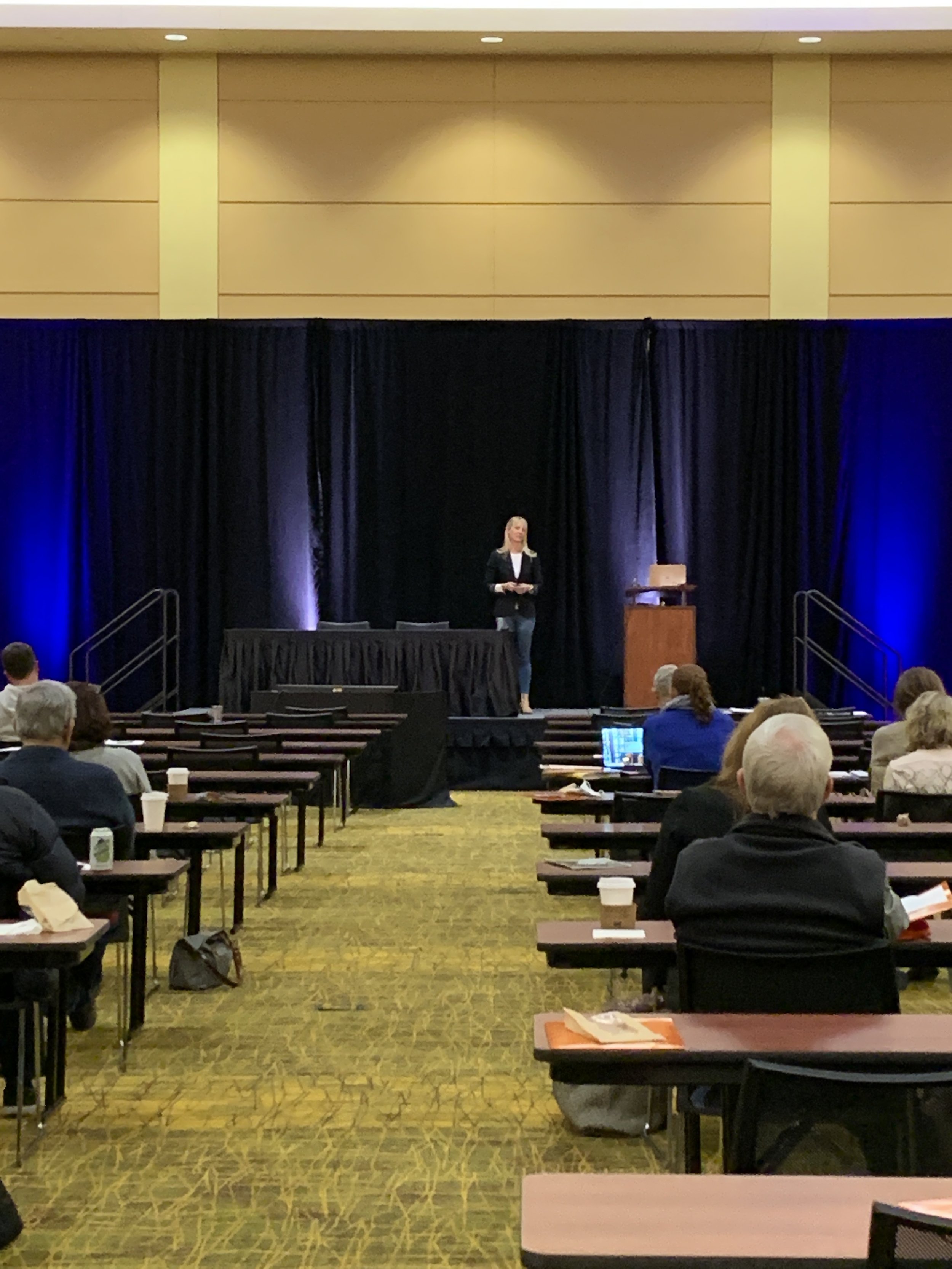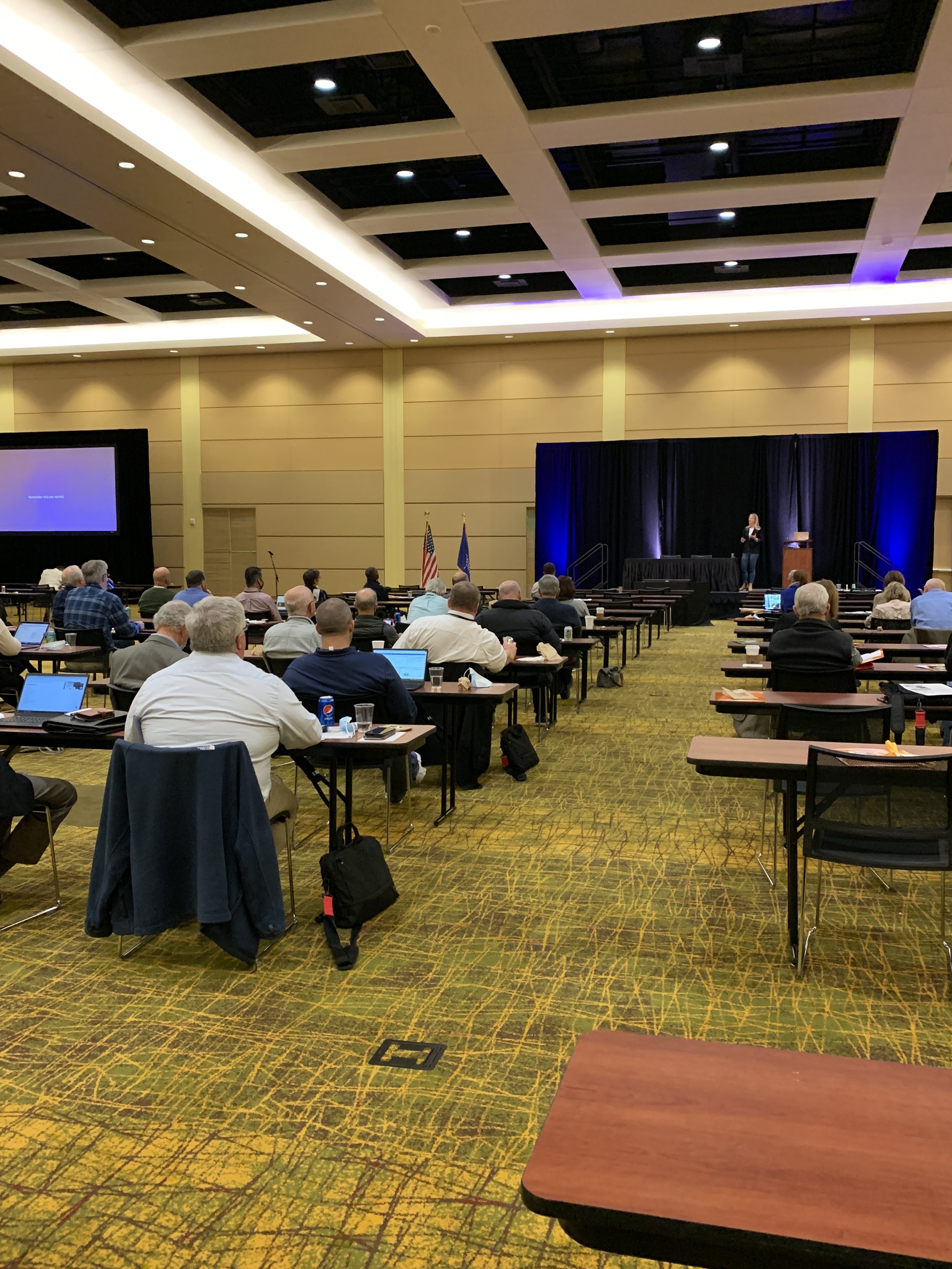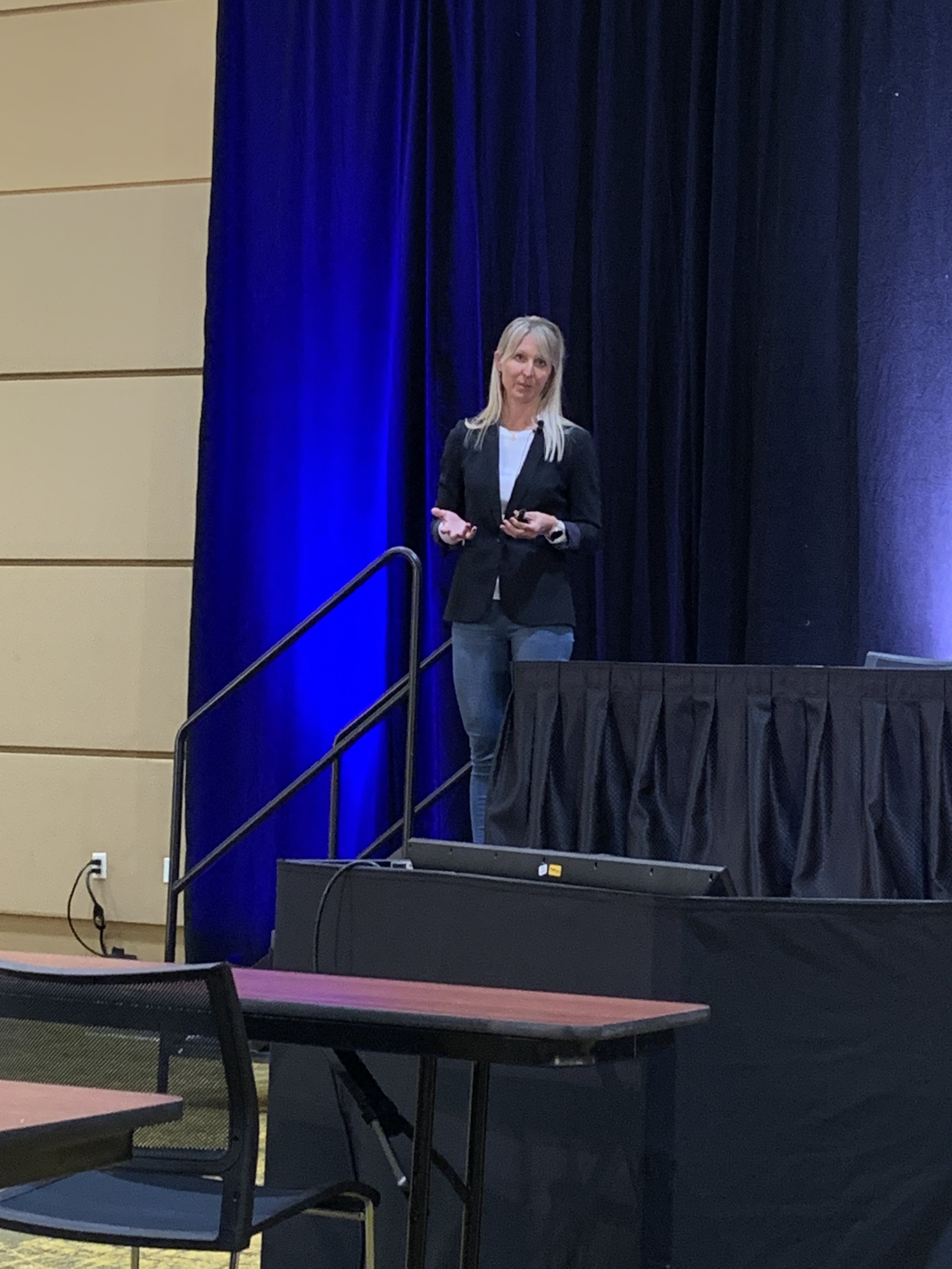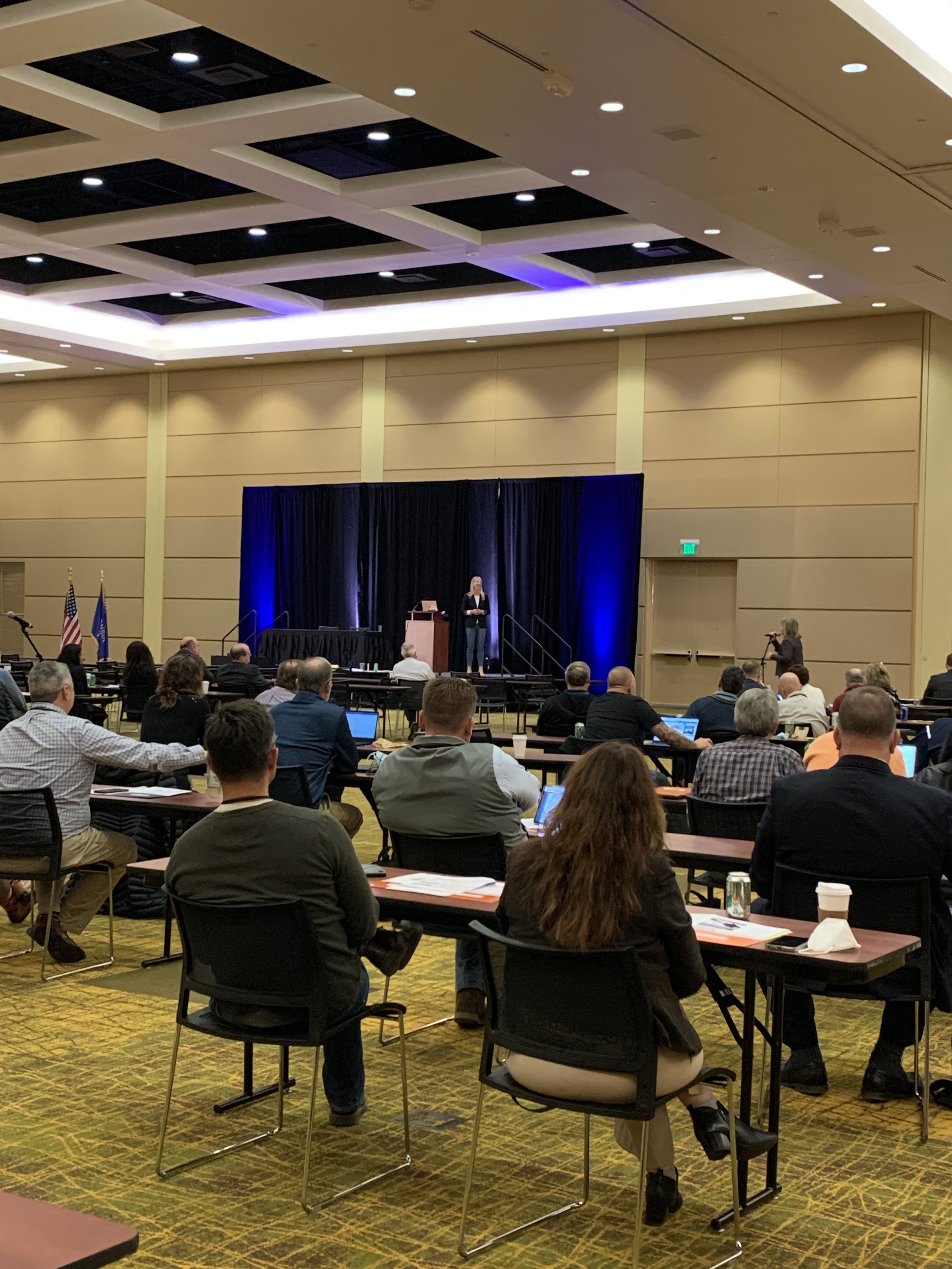Big Stages & Breadcrumbs
How did it come to be that I took the stage in front of 300+ judges and opened their annual Wisconsin Judicial Conference on Wednesday?!
I’ll tell you:
Several key women opened doors for me and I rushed through them each time one opened.
…that’s how!!
In the spring of 2018 I attended my first Nevada Justice women’s “badass” CLE for women in law. There, I met some incredible ladies include Sari, Randi, Dorothy and of course Julie, the head of the host organization. It came to be that Sari’s talk was to include a five minute talk about health and wellness. I boldly and audaciously asked to give it a go for her.
I don’t know what it was inside me that said, “do this, megan,” but something did. It felt worth taking risks for.
I prepared that night and arrived the next day ready to go.
That morning the ladies in charge said that they weren’t sure I could do it since it hadn’t been pre-approved by “the CLE folks” ahead of time. I persisted… they agreed… and I got up and gave my talk…. Short and sweet on topics I’m most passionate about. I was given really positive feedback.
Later- Julie asked me to be the speaker on health and alcohol for the Nevada bar conference in San Diego. My talk would earn ethics credits that all lawyers need and therefore, the room would be packed. I jumped at the chance to give this talk and it again netted me some positive feedback. Julie wrote a recommendation for my website -speaker page:
“Megan spoke at a seminar I coordinated and she blew the audience away. She is smart, energetic, motivating and empowering. I have already booked her to speak again.”
— Julie Ostrovsky, Deputy Executive Director, Nevada Justice Association
**just this last May 2021, a lawyer at a trial college in Cabo walked up to me and said that talk had changed his life. He’d quit drinking and really taken stock of his life and health and doubled down on getting healthy. Wow. My heart absolutely burst with this news.
I think because Julie’s recommendation was on my website or perhaps the folks who host these conferences probably all talk about speakers - I got a call in 2019 from Bryan with the Wisconsin bar and he invited me to speak at their summer convention. I went and gave my talk the summer of 2019 and in that audience was a woman named Kristin. We Immediately connected and to this day she credits that talk for why she drinks a glass of water each morning. 🙏🏼
Bryan then asked me to speak last summer (2020) at their womens’ caucus- which was postponed to 2021, and yes, I did. Kristin introduced me and spoke so fondly of me I felt like her audience was basically compelled to like me ;)
Kristin then went a step further and recommended me to her state bar judicial committee for their annual judges’ conference. That’s when all of the state’s judges convene to get boosted morale and education updates and so on.
Yes-one woman- Kristin opened this door for me and she’s the reason I got to stand up on a stage on Wednesday in front of the Wisconsin judiciary and do my very best to boost their morale, remind them why they started, and inspire them to take better care of themselves and in so doing, model self care to our entire profession.
Sari - Julie - Kristin … these women opened the doors for me. When they didn’t have to or need to and they had no skin in the game- they suggested me and I’m externally grateful.
Of course I’d be remiss if I didn’t thank the woman who taught me how to be a public speaker and how to love it…. That’s my mom. ;) she took me to toastmaster meetings with her when I was young (back then, I assumed this was a US Postal thing, which is where she worked- because you know, toastmasters, postmasters…) by observation I began to appreciate the importance of feeling comfortable being in front of a group of people speaking. Tbh - I’ve never understood why public speaking is feared second to (or as much as) death itself. I’ve always enjoyed it. It’s not something to fear. And that’s because of my mom.
…when it was time to graduate middle school I somehow (??) was nominated to give our graduating ceremony speech - I guess much like a high school valedictorian would but for 6-7-8th grade ;) I recall the auditorium being pretty full with a few hundred people there, it was a fairly big school and I was up on a stage wearing my little suit and with the notes of the speech we’d prepared and practiced.
It felt like a big deal to me. It felt good to do it well. I don’t recall what I said but I felt good about how it went.
Since then I’ve embraced opportunities to give speeches and talks.
In college I studied corporate communications. More speeches. Loved it. Then law school. Moot court and more talking in front of audiences and mock juries and so on. Loved it. And then lawyering. Focus groups. Trials. Conferences.
I’ve probably given hundreds of presentations to law enforcement groups, bike shops and cycling teams. I’ve given a handful or more on cycling law as part of legal seminars and CLEs. I’ve done now 10-12 in my role as “Trial Athlete,” where I talk to legal groups and orgs about health and wellness in this profession. This one this week was my first- but hopefully not my last -to a roomful of judges.
I am actually paid to speak.
After all these years and talks, I get paid to show up and do something I love and I hope- to change peoples lives for the better as they sit in their chair and lend me an hour of their time and attention.
I can think of no better way for me to serve this profession which is so hard on the humans in it. I can serve individual clients well, but I can have far greater impact serving large groups of lawyers and judges in this fashion. Giving more talks like this and the time and energy it takes is a small part of what motivated me to retire from my day-to-day lawyering and law firm ownership. I aim to spend my energy in bigger and more impactful ways.
And I hope to open doors for other women the way these women opened doors for me.
Here’s what I want to share for this experience share: my internal guidance system has always nudged me to say yes to these opportunities. Even though this trip involved flying to Wisconsin and being gone for three days and two nights and a rental car and two hours of driving each way plus airport chaos etc … it would have been SO much easier to say no. And yet I knew it was a yes.
I feel called to this type of work and that’s why I can say these YESSES are HELL YESSES. And when you know you know. When it’s a grey lukewarm “uhhh ok,” that’s really a hell NO. I’d be feeling resentful for this trip and the inconvenience of it if it were a lukewarm “sure.”
Instead I felt - and feel- lit up about it. And my intuition tells me to pursue more of this. So I shall. And when it is no longer a hell yea for me, I’ll acknowledge that too. Because “hell YESSES” can change. And that’s been a big aha for me recently also.
What lights you up?
As you look back …what breadcrumbs have led you to some of your best decisions and experiences ? What was your gut and inner knowing signaling to you in those breadcrumb experiences- and how did you know it felt RIGHT?! As you look back on what got you where you are today, what patterns emerge for you?
Finally … what door has someone opened for you and what door can you open for someone else?
Keep your eyes open and opportunities for both will appear.




